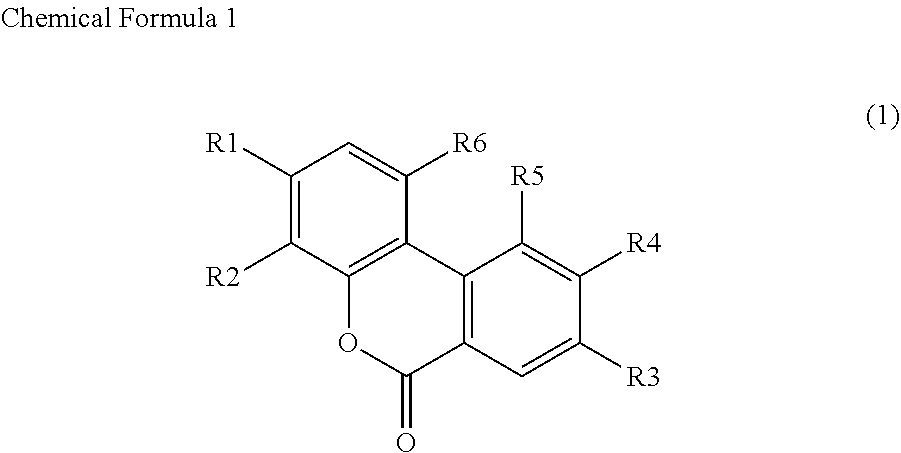Microorganism and production method for urolithins using same
a technology of urolithin and microorganisms, which is applied in the field of microorganisms and urolithin production methods using the same, can solve the problems of not being suitable for the purpose of using urolithins and chemical synthesis
- Summary
- Abstract
- Description
- Claims
- Application Information
AI Technical Summary
Benefits of technology
Problems solved by technology
Method used
Image
Examples
example 1
Strain Isolation, Taxonomic Properties
[0109]Isolation and the taxonomic properties of the strain of Eggerthella sp. DC 3563 (NITE BP-02376) are described below.
[0110]To isolate the present strain, ellagic acid was added in a final concentration of 1 g / L to an ABB culture medium (available from Oxoid Limited), after which the mixture was heat sterilized, the gas phase was purged with a gas of N2:CO2:H2 (80% / 10% / 10%), and the resulting product was used as a basal medium. The basal medium was inoculated with human feces and cultured at 37° C. under anaerobic conditions. The culture solution after cultivation was diluted and spread onto an ABB agar culture medium. A single colony were obtained by cultivation at 37° C. under anaerobic conditions. Each bacteria was inoculated into the basal medium and cultured at 37° C. under anaerobic conditions.
[0111]The amount of urolithins in the culture broth after cultivation was quantitatively determined by the following method.
[0112]Urolithins wer...
example 2
Strain Identification
[0123]DNA was extracted from DC 3563 strain, which was the present strain, full-length 16S rRNA gene was amplified by PCR using a universal primer for 16S rRNA genes, and the 16S rRNA gene sequence of the present strain was determined (SEQ ID NO: 1).
[0124]A homology search was performed using the DNA Data Bank of Japan (DDBJ), and DC 3563 strain, which was the present strain, exhibited 99.9% homology with Eggerthella lenta JCM 9979 (AB558167) strain.
[0125]In addition, sequences obtained from the Nucleic Acid Database for each standard strain of bacterial strains that are highly homologous to the present strain were subjected to multiple alignment, after which a molecular phylogenetic tree was prepared through the NJ method, and as a result, DC 3563 strain, which is the present strain, formed a cluster with the bacterial strain constituted of the genus Eggerthella and was shown to be a related species.
[0126]It was determined, as the comprehensive results of analy...
example 3
Production of Urolithins (Fermentation)
[0127]The basal medium described in Example 1 was inoculated with DC 3563 strain, which is the present strain, and cultured at 37° C. under anaerobic conditions for 2 weeks. After the cultivation was completed, the urolithins were quantitatively analyzed by the method described in Example 1.
[0128]The result shows that urolithin C was obtained in a molar yield of 90.3% with respect to the added ellagic acid.
PUM
| Property | Measurement | Unit |
|---|---|---|
| temperature | aaaaa | aaaaa |
| concentration | aaaaa | aaaaa |
| culture temperature | aaaaa | aaaaa |
Abstract
Description
Claims
Application Information
 Login to View More
Login to View More - R&D
- Intellectual Property
- Life Sciences
- Materials
- Tech Scout
- Unparalleled Data Quality
- Higher Quality Content
- 60% Fewer Hallucinations
Browse by: Latest US Patents, China's latest patents, Technical Efficacy Thesaurus, Application Domain, Technology Topic, Popular Technical Reports.
© 2025 PatSnap. All rights reserved.Legal|Privacy policy|Modern Slavery Act Transparency Statement|Sitemap|About US| Contact US: help@patsnap.com

